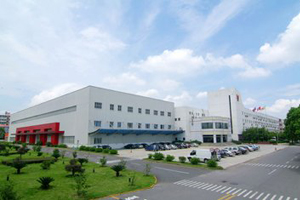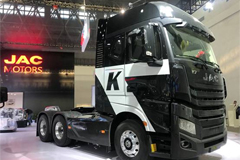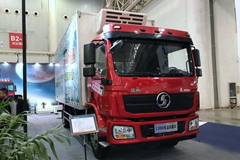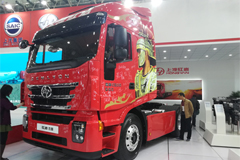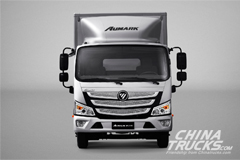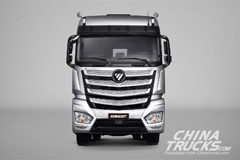Obama fuel standards lag behind EU effort
US President Barack Obama's new fuel economy standards announced on Wednesday (20 May) have won praise domestically and around the world for being America's first emissions cap, but however much of a step forward, if passed, the car emission rules will still lag far behind those of Europe's own much criticised rules.
Mr Obama's plan, a compromise between car manufacturers and environmental critics, would require the average US vehicle - cars and light trucks - to achieve 35.5 miles per gallon (in metric around 15 kilometres to the litre) by 2016, a 30 percent advance over current fuel standards.
"As a result of this agreement we will save 1.8 billion barrels of oil over the lifetime of the vehicles sold in the next five years," said the president announcing the measure.
According to a White House official, the programme will reduce greenhouse gas emissions by 900 million tonnes - the equivalent of taking 177 million cars off the road.
The proposed fuel economy and CO2 emissions standards marks the first time the US has regulated greenhouse gas emissions, and for this reason many people in the environmental community are cheering the move.
"Today's announcement is one of the most significant efforts undertaken by any president, ever, to end our addiction to oil and seriously slash our global warming emissions," said Carl Pope, the executive director of the Sierra Club, one of America's oldest and largest environmental groups.
"The speed with which the Obama administration is moving to build the clean energy economy has been breathtaking," he added.
But when compared to European union standards, those of Japan or even China, the lower level of ambition becomes apparent.
China currently enforces an average fuel efficiency standard of 35.8 miles per gallon (mpg) and Japan demands 42.6 mpg.
Europe meanwhile requires vehicles achieve 43.3 mpg and by 2016 - the deadline of the Obama scheme - vehicles in the 27-country bloc will have to meet an efficiency standard of 50 mpg.
Despite Washington's lower target, the development remains vital because the US accounts for roughly half of all CO2 emissions in the world that are produced by cars.
This is the case even though America is home to just 30 percent of the planet's cars because of the size of the country - people drive further in cars with larger engines.
EU's own targets criticised
And behind the headline targets, the European union is far from the car emissions angel it appears to be.
Last December, the EU reached a tentative agreement, yet to be approved by the European Parliament, on cutting car emissions.
Using a slightly different measuring stick to that of the US, the EU would require that the average carbon emissions from all new cars be reduced by 18 percent to 130 grams per kilometre by 2015.
However, green groups at the time slammed the deal as a capitulation to the car lobby, particularly from Germany, as the initial proposals from the European Commission would have seen all new cars required to meet the 130g/km standard by as early as 2012 as an average across a company's fleet - which was already a step back from previously stated ambitions.
Instead, firms were allowed to phase in their adherence to the standards - with 65 percent of a car company's fleet having to meet the requirement by 2012, 75 percent by 2013, 80 by 2014 and 100 percent by 2015.
Fines for breaching the standard were also watered down. Originally to have been €20 per excess gramme, they are now to be only €5 per gramme.
Finnish Green MEP Satu Hassi has suggested that the EU rules are weaker than what is likely to result simply from market demand. Consumers are increasingly prefer more fuel-efficient vehicles, she has argued, a trend that will drive down emissions from cars faster than the EU legislation.
Views:0
- XCMG Unveils New Hydrogen Fuel Cell Heavy Truck with Over 800km Range 2024-08-01
- 2023 Global Energy Transition High-level Forum Opened in Beijing 2023-09-21
- Weichai Releases World's First Commercialized High-power Metal-supported SOFC 2023-03-23
- DHL China Launched a Pilot Project for Hydrogen-fueled Trucks 2022-09-13
- Order Volume for Hydrogen Heavy Trucks in Two Months Surpassed the 10,000 Mark 2022-09-09
- Additional 1100 Units! Weichai’s Hydrogen Fuel Cell Are On a Fast Track 2022-09-02
- Order Summary: Hydrogen Fuel Cell Trucks Were Delivered Successively in China 2022-08-24
- 100 Jiefang Hydrogen Fuel Cell Heavy Trucks Delivered 2022-08-17
- First 24 Hydrogen Sanitation Vehicles Put into Use in Guangzhou 2022-08-11
- 410 Units of SAIC Fuel Cell Vehicles Were Put into Commercial Use in Shanghai 2022-08-05
Submit Your Requirements, We Are Always At Your Service.
- Jiefang Partners with FCTS to Develop Hydrogen-Powered Car Transport Vehicles
- Farizon Auto Sets Roadmap for Global Expansion
- JMC Assembles Kaiyun Euro 5 Models in Vietnam
- SuperPanther Teams up with DHL for Sustainable Logistics
- SuperPanther Partners with Steyr Automotive to Launch Electric Heavy-Duty Trucks
- JAC Showcases T9 EV Pickup at 2024 EVA Frankfurt Electric Vehicle Expo
- Zoomlion Reports Record Overseas Revenue Growth for H1, 2024
- Madagascar President Rajoelina Visits Foton Motor
- European Premiere for Kia PBV at IAA Hannover 2024
- SAIC Maxus RV Debuts at Düsseldorf Caravan Show in Germany
- Heavy Truck Sales Reach 59,000 Units in July in China
- Tractor Sales in H1, 2024 Reached 162,100 Units, Up 4%
- China's Truck Export Reaches 351,076 Units in H1 2024
- XCMG Dominates 2024 with Record Sales in New Energy Heavy Trucks
- Mid-Year Pickup Market Report: JAC Exports Up 13%, JMC Exceed 36,000 Units
- Truck Exports in May 2024: China Exported Close to 65,000 Trucks
- Exports of Pickups Reached 22,892 Units in May
- Exports Surge by 157%! DFAC Exports 9,628 Vehicles from January to May
- China's Heavy Truck Exports Rising 58% YOY to 276,000 Units in 2023
- China Exported 507,000 Trucks from Jan.-Sept., Up 21% YoY



